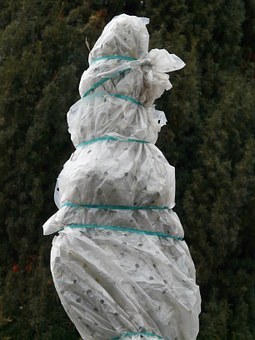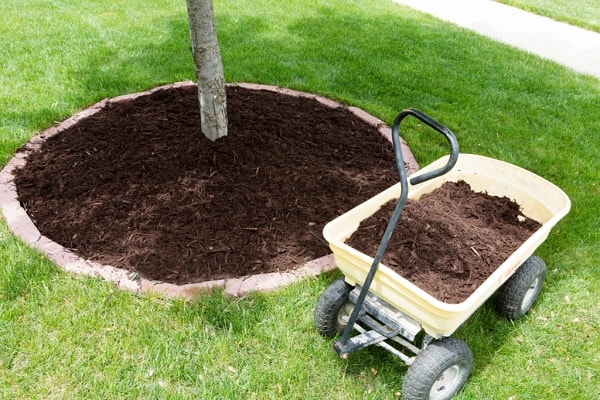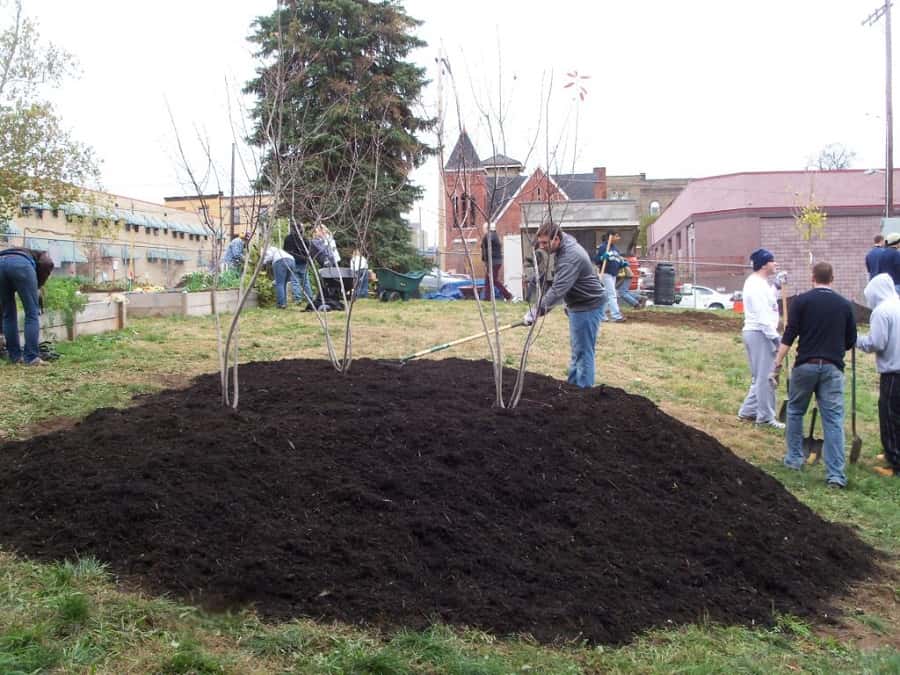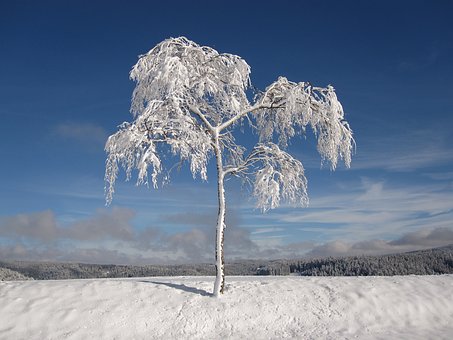Tree damage can be severe in icy winter weather. Storms, extreme temperature, ice melt/salt, wind, and the winter sun all take a toll on the life of our landscaping. Wildlife also seek sustenance from trees and shrubs, stripping bark and damaging the plants. Fortunately, there are ways to protect trees and shrubs this winter. Learn how to spot problem areas and take action:

1. Wrapping. In most cases, plants are wrapped to protect needles, buds, or leaves from drying wind. Wrapping the plants also serves as support for branches that could be damaged by snow and ice. Consider wrapping:
- Evergreens
- Trees and shrubs located next to heavily salted roads/sidewalks
- Broad-leaved plants
- Newly-planted trees or shrubs
- Trees with thin bark

2. Mulching. Unlike branches and buds, roots do not become dormant quickly in the winter. Mulching is an effective method of protecting the roots of plants. Trees and shrubs that were transplanted around September are prone to suffer from frost heave. This is caused by repeated freezing and thawing that pushes the crown of the plant out of the ground and can potentially kill all growth. Mulch these plants:
- Ones that are only “marginally hardy”
- Trees and shrubs planted in September
- Japanese Maples

3. Mounding. For a range of delicate plants, mounding them for the winter can protect them. The purpose is to help the canes of plants survive so there will be healthy stems and buds for the plant to grow in the spring. Cold weather mounding is recommended for:
- Big leaf hydrangeas
- Roses
- Butterfly bushes
Winter injury is a common concern for trees and shrubs, but can be avoided with care and supervision. Caledon Treeland can help with the care of your landscaping, and prevent tree damage this winter. Contact us at (905) 880-1828.

